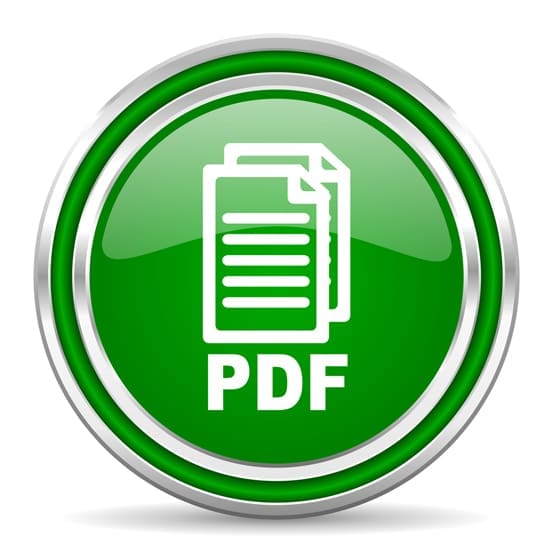The Portable Document Format (“PDF”) has become a universal component of most document imaging systems because it allows users to share documents easily with anyone and both retain and protect the desired layout. While a PDF document is useful in many situations, it adds complexity, time and costs to the translation process.
Surprised? Most people are.
This document will help you better understand how to prepare documents for your Translation Service Provider (“TSP”) and why, as a rule of thumb, you should always try and provide source text in the original file format rather than as a PDF.
Why are PDFs popular?
The PDF was invented over 20 years ago and has grown to become a universal standard for document exchange. More than one billion PDF files are in existence, which speaks to the integrity of this open standard.
Key benefits
True mobility and portability
You can read PDF files whenever, and wherever, you like using free tools like Adobe Acrobat Reader. PDF files can be viewed regardless of the software (Illustrator, AutoCAD, InDesign, Quark, etc.) and operating system used to create them, and can be displayed on most output devices (computer screen, tablet or mobile device).
Visual elements and interactive functions can be included
When you convert text, tables, graphics and web pages to PDF, they look just like the original. You can also easily include audio, hyperlinks and video. More advanced users can integrate business logic into an interactive form that will import and export data as requested.
File compression capability
PDF can reduce graphics-heavy files down to 8:1 with no loss in quality, making it a smaller document size for uploading/downloading.
Searchable
It is easy to find a word or phrase, and search for patches of text and metadata.
PDF pain versus gain
Despite the popularity and utility of PDFs, they are not compatible with Computer Assisted Translation (“CAT”) technologies. PDF documents cannot be edited. To retain layout and improve consistency between translation projects, PDFs must be converted into another format, such as MS Word, in order to move through the translation process.
PDF’s increase costs and risks of error and lengthen timelines
The conversion process is not technically perfect and introduces formatting errors that have to be manually identified and corrected. Text within images may not be properly converted, sentences are often broken with hard returns at line breaks, and text boxes are created where unnecessary. Cleaning that up is painstaking work and subject to human error despite every effort to achieve perfection. Naturally, the time and effort required has to be charged back to the project.
Types of materials where original source files matter most
- Product and/or service brochures
- Advertising materials such as flyers and print ads
- Business presentations
- Corporate communications
TSPs translate text from PDFs regularly
Working with PDFs is not a problem for TSPs, but it is a challenge. A qualified TSP will be experienced at the extraction and handling of the manual portions, and will return the translated document to you in PDF format, if requested.
What are the gains of providing TSPs with a PDF?
From the perspective of a TSP, there are few gains compared to the option of using original source files. Actual gains will come the day that technology overcomes file conversion issues.
Tips for getting source files
If the source files of your document are on hand, you’ll obviously have no issue. But often, documents are created by others in your company or third parties.
Finding source details of an editable PDF document
Open your document, click “File” then click “Properties” from the drop-down menu to view the original file format and the person who generated the file. The most common file formats used are: MS Word, InDesign and Illustrator.
Unfortunately, the vast majority of business people are not educated about the nuances of translation production efficiencies (and most are not likely interested in learning about them). So asking for “original source files” may set off an alarm bell unnecessarily.
Remember these tips when requesting source files from others
A professional TSP is used to working with confidential documents and should have a data security policy which means there is no risk in providing them with source files;
- There can be material costs savings (this will vary by project);
- Using source files will improve consistency from one translation project to the next;
- If you are in a rush, stress that a PDF requires conversion time and will cause you delays;
- Avoid human errors. Original source files in a compatible format will contain all text required for translation and eliminate the need for manual intervention.
Summary
- Always try and provide your TSP with original source text files.
- PDF documents cannot be edited and must be converted into another format, such as
MS Word, in order to move through the translation process.
- PDFs increase translation costs, risks of error and lengthen turnaround time.
- Using source text files improves consistency from one translation project to another.
- TSPs translate PDF files every day (source text files are not always available).
- A qualified TSP has data security policies so there is no risk sending them source text files.


